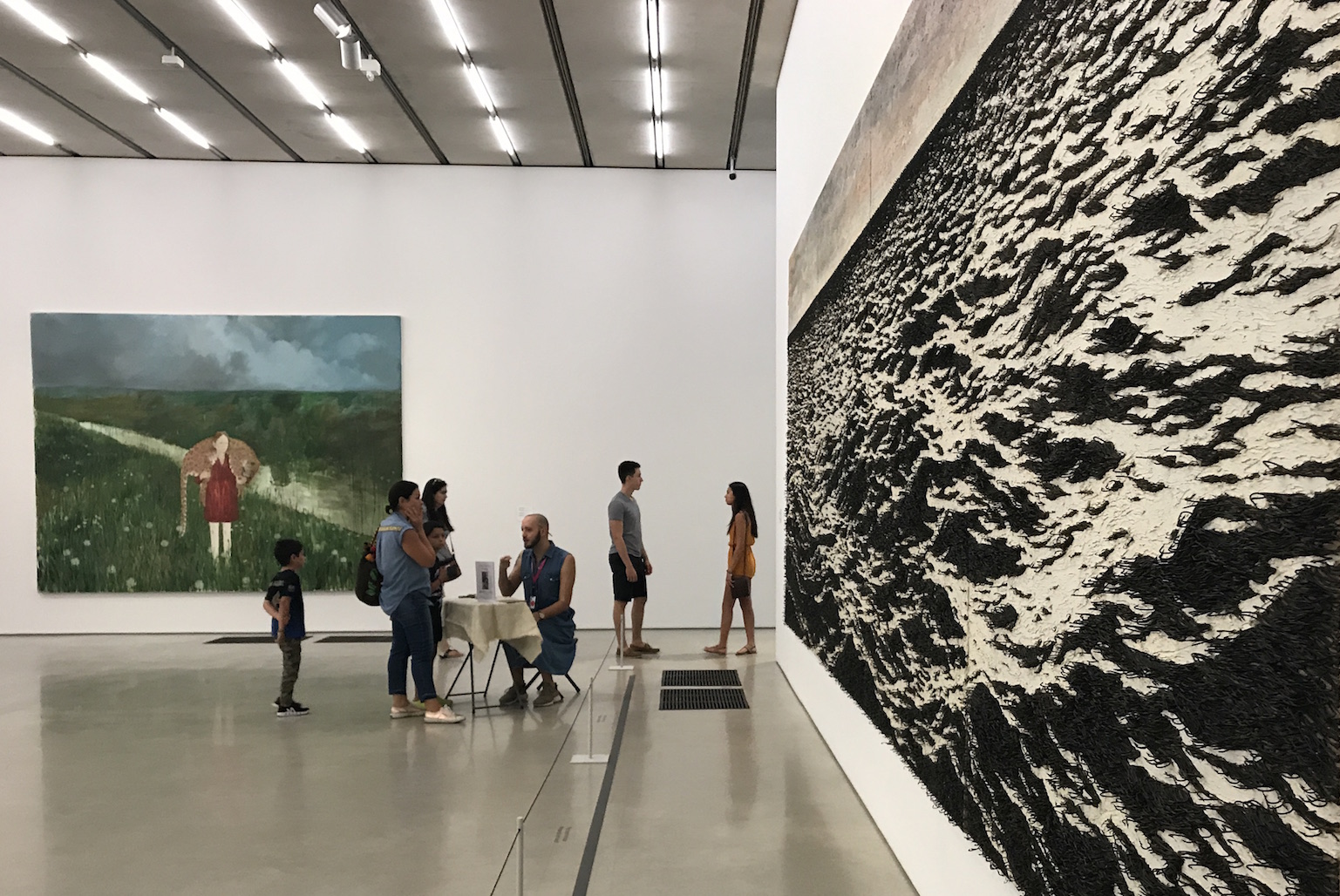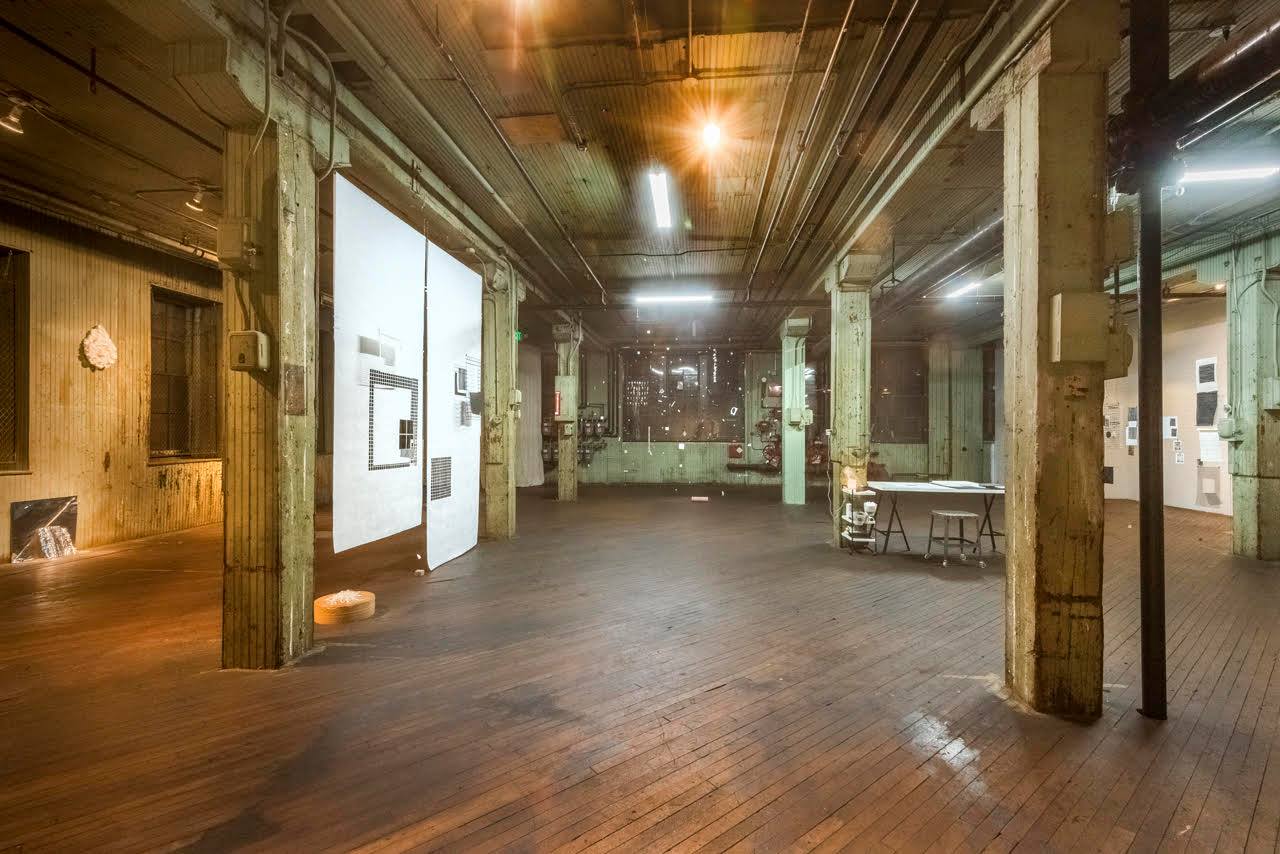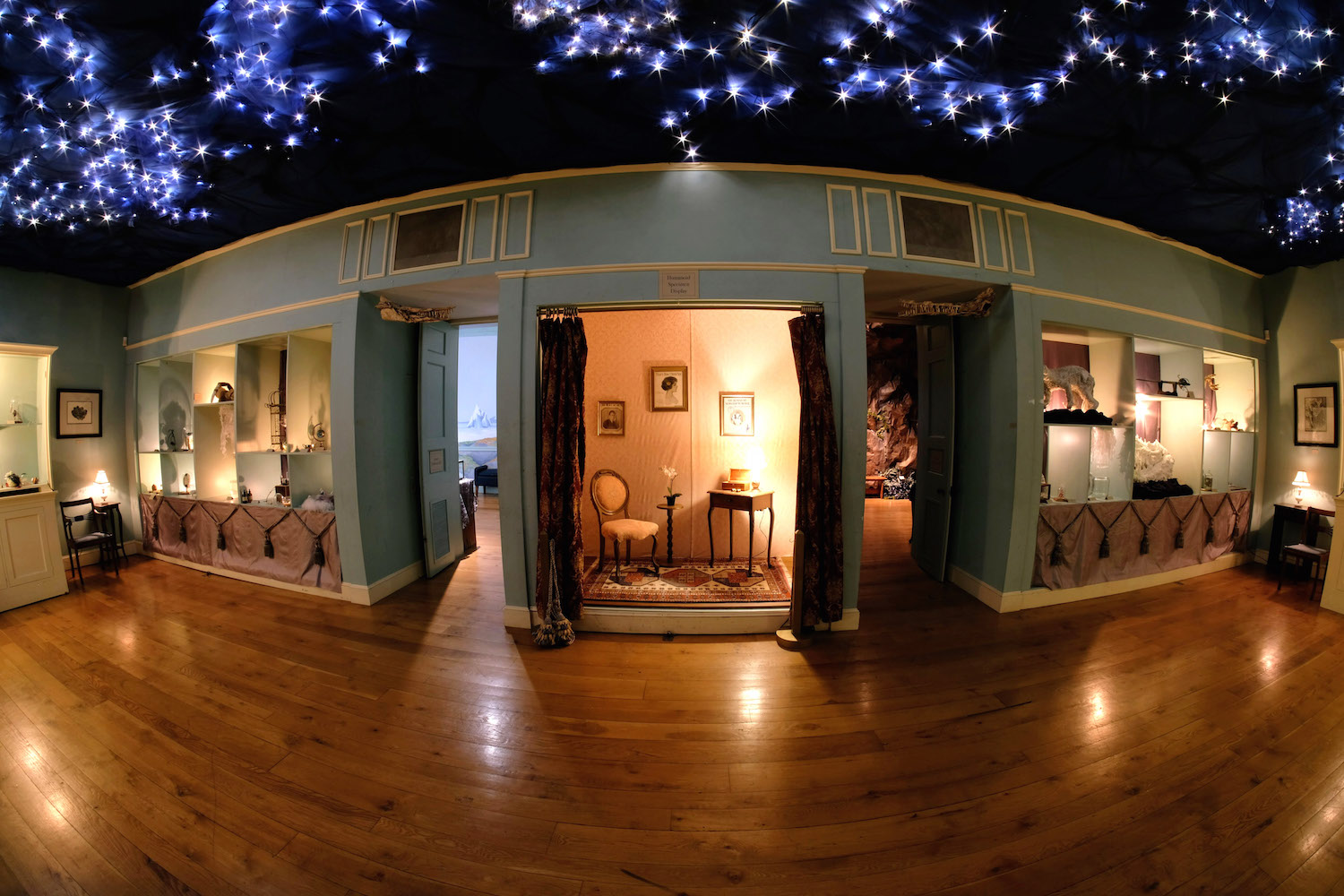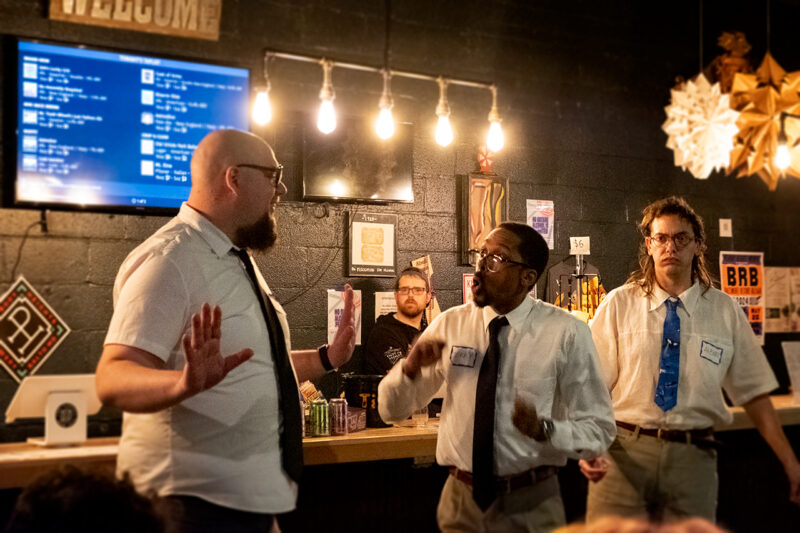H.T. Darling’s Incredible Musaeum at The Peale by Amber Eve Anderson
Before even entering H.T. Darling’s Incredible Musaeum, “an immersive theatre experience beyond space and time,” a man muttering in the passageway just outside the door sets the stage. The muttering is delivered in such a way that is meant to be observed, the barrier between performer and audience stripped bare. Yet the rules of engagement remain unclear, myself the tiniest bit unnerved.
At check-in, audience members are instructed to choose a nametag on a golden lanyard. I picked Lady Abby Aaronson, and my date, Sir Olstead. The atmosphere was energetic and expectant as observers milled about inspecting necklaces made of animal teeth, dark brown vials of mysterious medicinals, and air plants within seashells suspended from the ceiling. Two actresses—obviously so by their matching attire and mannerisms—described the potions and artifacts, but the line between actor and audience wasn’t always so easy to distinguish.

I side-eyed a man wearing a three-piece suit and using a cane (audience member) while Sir Olstead went missing within the first few minutes of our arrival. In his absence, I sat in a make-shift theatre to watch an introductory video of H.T. Darling’s accomplishments as a “visionary explorer and conqueror of worlds.” Typical pre-curtain murmurings hummed alongside the quixotic voiceover that described the Perisphere, a region of space and time—a form of conveyance—harnessed by the speed of thought, by which H.T. Darling discovered the planet New Galapagos in the aurora borealis. There was a dogmatic tone to an ethereal sense of nostalgia, eeriness underlying it all.
The play officially began with the ring of a bell. After a brief introduction, the second floor was opened to viewers, and we were instructed, “Be adventurous. You’ll be rewarded.” Museum guards dressed in gray stood beside closed doors. To the right was the Underland of New Galapagos, to the left, the Overland. Every inch of the museum was incorporated as part of the set, an immersive installation in its own right.

The Grand Exhibition Hall in the back displayed discoveries from H.T. Darling’s explorations: geodes and skulls layered below bell jars and behind curved looking glasses; diaphanous hanging formations that moved up and down with water pumping through them; mysterious feathered creatures animated within the display by gray satin-gloved hands; an eyeball of a lost member of the exploration team revived with a drop of serotonin from the help of an audience member. Two actors in long, dark gowns moved through the spaces, drawing the attention of the crowd through the various rooms. The bell rang to announce each new act, some occurring simultaneously in different rooms so that it is impossible to watch every part of the event in a single viewing.
Throughout the two-hour experience I roamed through rooms inspecting objects. I was part of a small group stolen away by a “humanoid” (an inhabitant of New Galapagos and the love object of H.T. Darling) past a room of white drapery and sparkling projections to a dark nook in the attic where I held hands with a circle of strangers. I wiggled my upward-pointed fingers by my face to mimic torchlight that danced around the room like flames. I followed H.T. Darling through various stages of egotism and despair. I watched a puppet show. I heard clapping and grunting from rooms I could not access. At times, I avoided eye contact.

The story line, if you can follow it or piece it together from the multiplicity of experiences afterwards, addresses the very nature of the location where it takes place: a historical museum, the Peale Center being the first in America to be dedicated as such. Nancy Proctor, the new director of the Peale Center this year, thinks immersive theatre has a lot to offer a permanent museum collection, one that could easily grow stale. Like H.T. Darling’s Incredible Musaeum, she is looking toward more immersive and participatory experiences. In March, magician and performance artist David London will present HUMBUG: The Great P.T. Barnam Séance. The show will address early American museum practices, including both the Peale family and Barnam’s contributions. The show will consist of genuine artifacts from Barnam’s life alongside a custom-made, 9-foot kinetic séance table to summon the spirit of Barnam.
Proctor’s aim is to take a digital-first approach to the Peale Center collection. “Housing and looking after historic artifacts is a very important responsibility and an expensive thing to do.” She spoke of digitizing the original collection in order to make them available through new technologies, like virtual reality, projections, or 3D-printed replicas of digital objects. These substitutes open the door to multisensory experiences of objects without the risk of damaging the originals. While the Peale Center itself has a relatively limited physical space, these experiences offer a layered approach that can speak to the many different stories of Baltimore’s history.

What was so engaging about H.T. Darling’s Incredible Musaeum as a viewer was its lack of terms, a a requirement of openness from the audience and a willingness to engage. The setting itself is so much of the experience that it dictates the way people act. I was asked my adopted name multiple times along with various other questions throughout the night, and I heard fellow audience members adapt accents from bygone eras in their responses.
The experience of the immersive theatre itself changed based on which other members of the audience I was with, from serious to silly. At one point, an audience member told of his friend who had died while snorkeling in Australia. At another, I glimpsed H.T. Darling breaking character while writing out a will to Sir Olstead that had all of us laughing. How much was real or fabricated was all part of the mystery. The quality, detail and imaginativeness of every aspect of the experience heightened the playful environment. It asked viewers to take a leap of faith and go along for the ride.
“What we’ve seen so far at the Peale is that contemporary artists are inspired by the building and its history,” Proctor says. “They often do a better job at identifying the ways that those stories are relevant to contemporary life. I want to keep that programming going as a way of making history relevant, rather than putting it behind glass. To make experiences and content more accessible to people in the ways that they engage and consume that content. We don’t want to be an institution that only exists within these walls.”

H.T. Darling’s Incredible Musaeum Presents: The Treasures of New Galapagos, Astonishing Aquisitions from the Perisphere
H.T. Darling’s Incredible Musaeum
Thursdays-Sundays from November 16-December 17, 2017 at The Peale Center
Family Day: Saturday, December 9, 10am–1pm
New Galapagos Gala: Tuesday, December 12, 7-10pm
Shows at 8pm on Thursdays, Fridays, Saturdays and at 7pm on Sundays November 16 through December 17 at The Peale Center, 225 Holliday Street, Baltimore, MD 21202. Doors open 30 minutes before the show starts.






